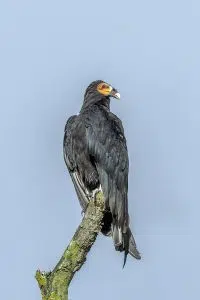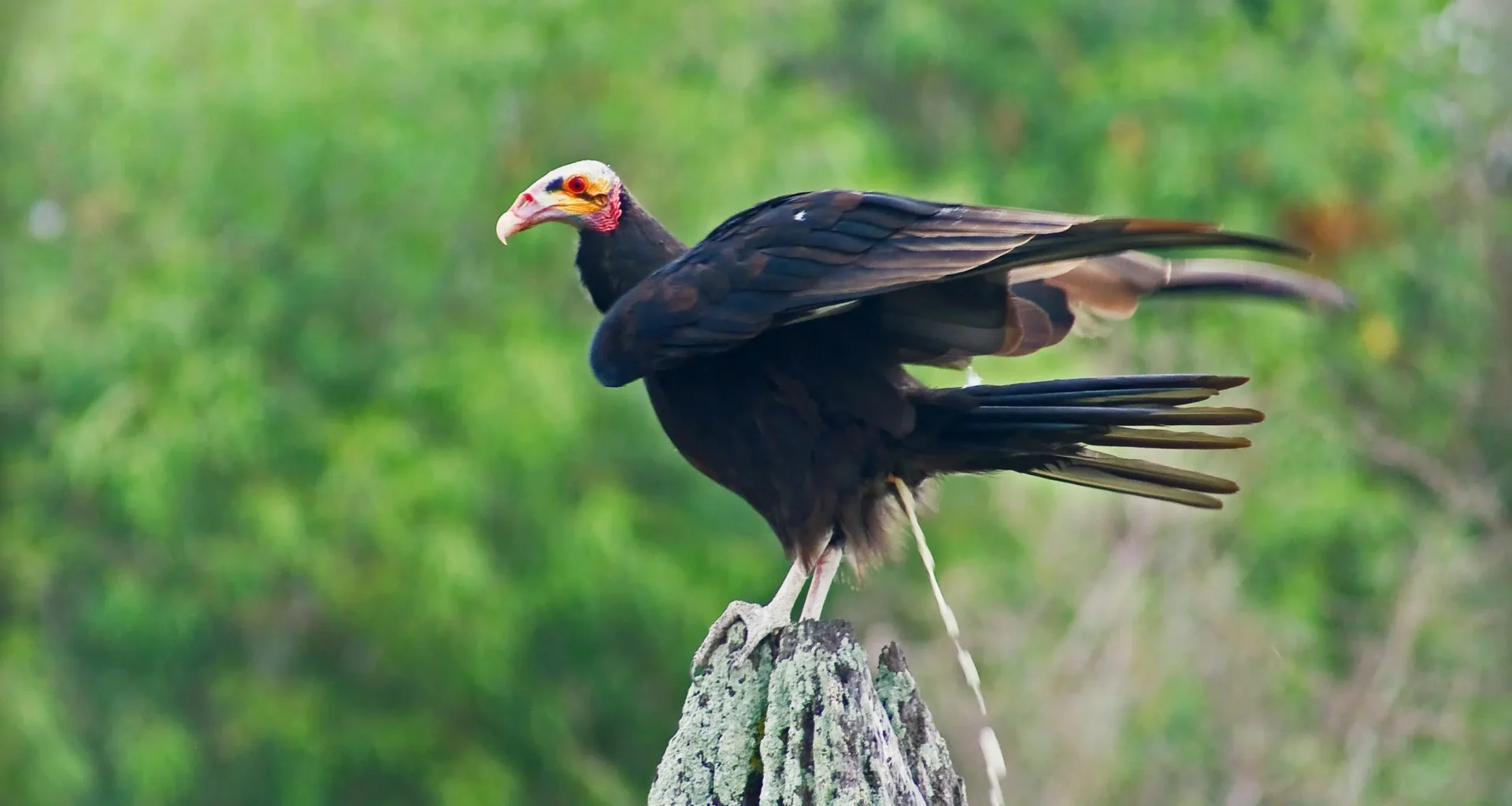The birth of a lesser yellow-headed vulture chick in a zoo in the Czech Republic marked the beginning of an intervention as delicate as it is vital. Faced with the unexpected rejection of its biological parents, the caregivers made a key decision for its survival: to raise it without direct human contact.
The method, which simulates natural feeding using puppets shaped like adult vultures, aims to ensure that the bird grows up without associating human presence with obtaining food or affection. This strategy has already been successfully applied to other endangered species.
The technique not only saves the animal’s life but also ensures that it can maintain essential instinctive behaviors for its future survival, such as recognizing individuals of its species and reproductive capability.
Avoiding human imprinting is crucial in species destined to be reintroduced into the wild or to participate in genetic conservation programs.
 Prague Zoo feeds a lesser yellow-headed vulture chick without human contact to preserve wildlife. Photo: Wikipedia.
Prague Zoo feeds a lesser yellow-headed vulture chick without human contact to preserve wildlife. Photo: Wikipedia.
Imitating nature to ensure the future
The chick is fed with a puppet that displays basic visual cues of an adult vulture, such as the pale orange color on the head and neck. It is not an exact replica, but a tool that allows it to maintain its natural behavior patterns.
The caregivers house it in a special box, where it remains without direct human contact. This reduces the risk of the bird forming bonds with people and losing the ability to identify others of its species as part of its social group.
This rearing protocol has proven its effectiveness on other occasions, such as in the cases of the Javan green magpie and the rhinoceros hornbill, bird species in serious danger of extinction that managed to develop without direct human intervention.
In a global context where many species struggle to survive, these techniques represent a key tool to prevent the permanent loss of biodiversity.
Wild rearing without human contact: why it is vital
Direct contact between wild animals and humans can profoundly alter their development. In birds, for example, this artificial bond can prevent them from recognizing other individuals of their species, hindering their future reproduction.
When a wild animal is raised with human imprinting, it often develops atypical behaviors, such as lack of fear towards humans or seeking food in urban areas. This compromises their reintegration into the natural habitat and exposes them to dangers.
Conversely, the use of puppets and other rearing methods without contact encourages animals to maintain a natural behavior, essential for survival in the wild or in controlled captivity.
It also allows veterinary teams to monitor their health and development without interfering with their social behavior, an essential balance in the conservation programs of endangered species.
 Prague Zoo incorporates the no-contact human technique to preserve wildlife. Photo: Wikipedia.
Prague Zoo incorporates the no-contact human technique to preserve wildlife. Photo: Wikipedia.
A key bird for degraded ecosystems
The lesser yellow-headed vulture, also known as Cathartes burrovianus, inhabits vast areas of the American continent, from Mexico to northern Argentina. It prefers open landscapes such as grasslands, savannas, and degraded forests.
Its ecological role is vital: it feeds on carrion, helping to keep ecosystems clean and reducing health risks. Thanks to its keen sense of smell, it detects dead animals from great distances, providing an essential service of natural cleaning.
It cannot open the carcasses of large animals on its own, so it usually waits for stronger vultures to break the skin. Its cooperative feeding strategy reflects the complex ecological network that sustains life in environments where others can no longer survive.
Its reproduction is equally unique: they do not build nests and place their eggs in caves or natural hollows. The chicks are born blind and without down feathers, fully dependent on parental care. When that care is lacking, human hands must act with caution and respect.
